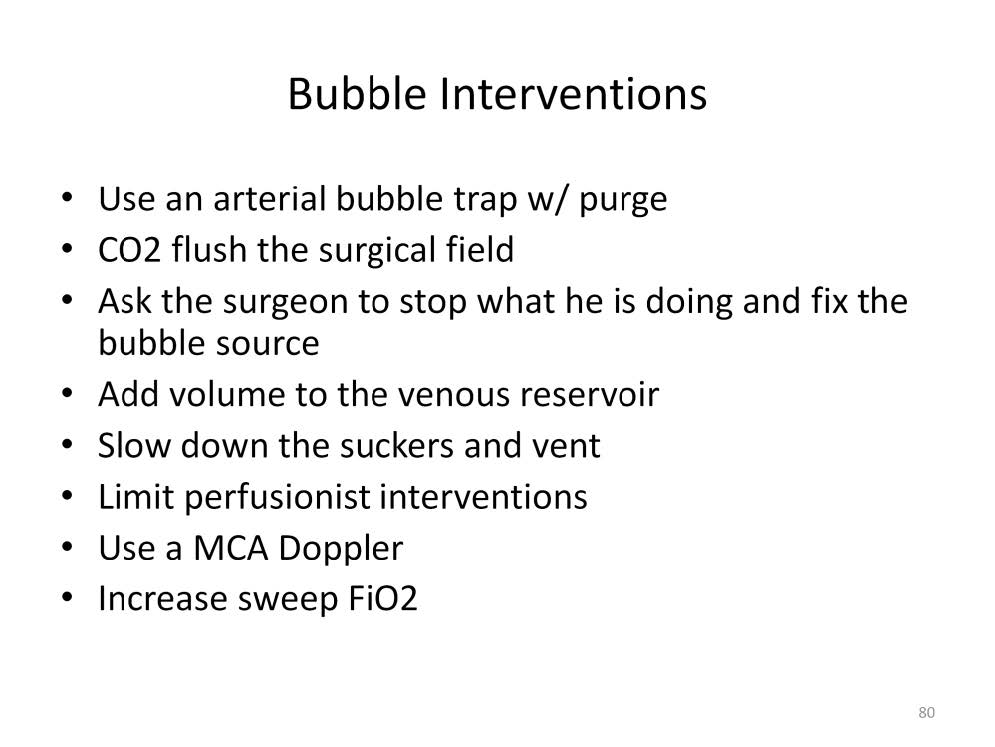
These are the common interventions perfusionists use to prevent or remove GME: An arterial bubble trap or filter with a purge line physically removes many bubbles from the system, but not all of them. A CO2 flush of the surgical field will reduce the possibility of sucking nitrogen from the field, either through the venous line or the vent and suckers. It is not practical to ask the surgeon to stop what he is doing and fix the bubble source unless it is impairing venous return. Adding volume to the venous reservoir may provide more pressure at the bottom and increase the bubble buoyancy, but only for larger bubbles. Slowing down the suckers and vent will reduce the entrainment of nitrogen. But this may not be possible at certain times during the course of the surgery. Gaseous microemboli encapsulated by an albumin membrane (bloody meringue) are difficult to disperse. Limiting interventions is not practical in certain situations. A middle cerebral artery Doppler device monitors bubbles going to the brain and can indicate if an intervention to stop them is effective. Increasing the sweep gas FiO2 through the oxygenator will change the nitrogen bubbles to oxygen bubbles which are much less harmful.

Perfusion Theory is an educational platform for the Oxygen Pressure Field Theory (OPFT). August Krogh’s theoretical concept of the oxygen pressure field is explained and then applied to clinical applications in perfusion practice.